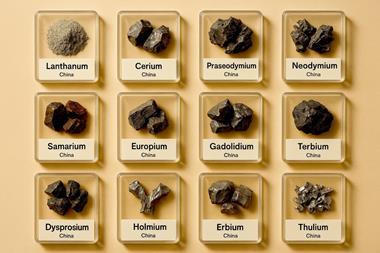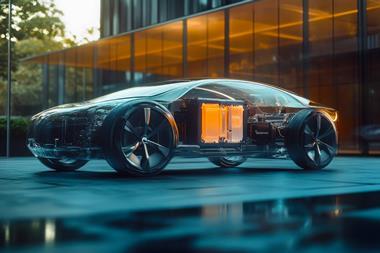Two-sided coating processes offer economic and ecological advancements in battery electrode manufacturing
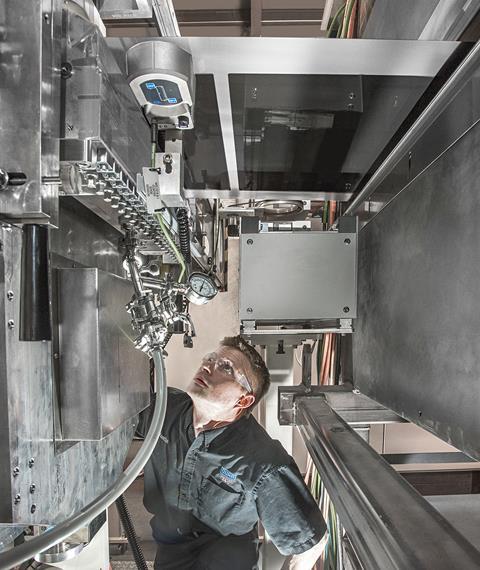
The electrode technology inside every lithium-ion battery, whatever it powers, is metal foil that is coated on both sides with a special chemical mixture/slurry. The foil material is aluminium for the positive electrode and copper for the negative electrode. These coated electrodes are key to the battery’s operation, so the coating quality is an important factor in its performance and reliability. This is why the entire coating process is extremely precise and tightly controlled. So, when considering the environment and production costs, a resource-saving handling of the slurry is crucial.
A typical coating chemistry is lithium oxide dispersed in an electronic-grade solvent and graphite dispersed in water. The mixture is applied to both sides of the foils with a precision engineered slot-die. The foil travels over a stainless-steel backing roll that helps control the foil and provide a solid platform for producing an accurate wet coating layer.
Optimum battery performance requires controlling every step in the coating process, from powder handling and slurry mixing to coating and drying. A key challenge of slot-die coating against a backing roll occurs when applying the chemistry to both sides of the foil. “The usual process only allows coating the foil one side at a time. This production set up requires two separate passes through the same coating line, but a more efficient and space-saving method is to coat both sides in a single pass. Two ways to do this with a sequential or tandem coating system or with simultaneous two-sided coating”, explains Eric Maki, development centre manager at Dürr Megtec in De Pere, WI, USA.
Simultaneous two-sided coating process
Dürr Megtec engineers in De Pere developed a simultaneous two-sided coating process. Side A is coated against a backing roll and side B, the underside of the foil, is coated in a tensioned web process with a slot-die mounted in a vertical orientation and a patented vacuum device. The process delivers a uniform coat weight matched to that of backing roll coating.
A major benefit of simultaneous two-sided electrode coating is a smaller overall manufacturing footprint compared to tandem lines, since the overall length is 5 to 10m shorter and the height is 5 to 6m less. Coating both sides simultaneously effectively doubles the throughput compared to single-side coaters. Qualitative advantages of the simultaneous process include reduced incidents of particles being trapped at the coating point (no streaks or no foil breaks), fewer problems with wrinkles at the coating point and no edge curl occurs. Since simultaneous coating requires only one pass through the dryer, delivering equal drying of both coated sides, it is also advantageous for energy consumption.
As the lithium-ion battery industry matures, pressure to decrease costs continues to mount. Dürr Megtec’s simultaneous two-sided coating process enables battery manufacturers to be more cost-effective, and therefore, more competitive. By shortening the time it takes to get lithium-ion batteries to market, manufacturers are not delayed in getting their battery-powered products into the hands of their customers. With its simultaneous two-sided coating solution for battery electrodes, Dürr is benefiting particularly from the growing demand for small-format lithium-ion batteries for hearing aids, headphones and other mobile electrical devices.
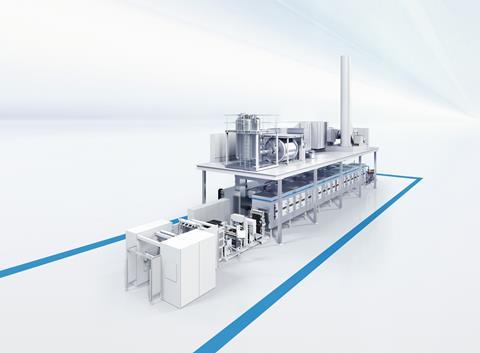
Improved efficiencies, yields and end-use performance
The energy storage industry is demanding reduced production costs along with increased yields and product quality. In addition, OEMs like EV manufacturers who use lithium-ion batteries in their products strive to minimise the overall ecological footprint also through sustainable production processes. However, manufacturing large quantities of lithium-ion battery cells requires a significant change and dimensional upscaling of the production equipment and output per line to achieve industry targets.
David Ventola, director Business Development Engineered Products at Dürr Megtec in De Pere, observed that this speed to market is why battery manufacturers are turning to Dürr Megtec for solutions to speed the transition from R&D to mass production of lithium-ion battery electrodes. “We offer a suite of coating lines. From an easy-to-use laboratory coating line designed specifically for short production runs, to the GigaCoater system that can provide an annual output of 2 to 3 gigawatt hours (GWh) per machine”, explains Ventola. In other words, that is enough battery electrode capacity to provide 5 hours of backup power for 300,000 homes (based on average consumption of 2kWh), or energy storage for 30,000 battery electric vehicles (100 kWh configured vehicle).
Portfolio expanded for the automotive sector
The biggest growth driver in the market for battery manufacturing technology is electromobility. For the large amounts of electrodes required for e-car batteries, Dürr has expanded its portfolio and partners with the Japanese company Techno Smart. The highly efficient, proven and robust coating process by Techno Smart is in high demand among battery manufacturers for electric cars. That is why Dürr is now bringing the coating specialist’s technology on board. In the Techno Smart process, the slurry is applied on the first side by a slot-die over a backing roller and gets dried directly afterwards. After leaving the dryer in the first pass, the foil is turned and the second side is coated and dried following the same process.
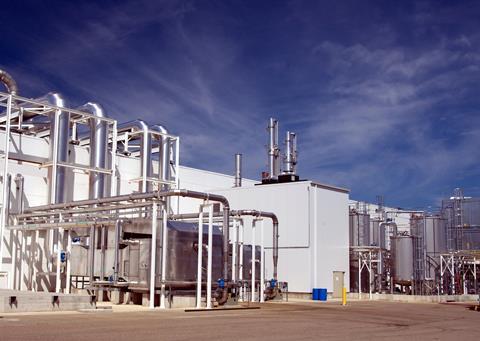
Sustainability through solvent recovery and re-use
Dürr Megtec has developed proprietary systems for the high-efficiency removal, recovery, and purification of solvents from coating line exhaust air streams in the battery electrode manufacturing process. The unique technology that comprises a multistage pollution control reaches a typical solvent recovery rate of >99% and achieves emissions of less than 1mg/Nm³. The system consists of a condenser, which recovers most of the solvent by condensation, supplemented by exhaust air cleaning by combination of concentrators and carbon filter, configured to meet strictest global and local emissions standards. After a distillation process, 95% of solvent can be reused in the coating process with a purity of 99.85% of the battery grade slurry. This way, manufacturers achieve savings of more than $2 per kg of solvent.
Thanks to Dürr Megtec’s single source portfolio for the production of battery electrodes, manufacturers benefit from both economic and ecological advantages. Thanks to the newly expanded portfolio by Techno Smart, producers of batteries for electric cars will in future receive complete packages from Dürr as one supplier: state-of-the-art technology for coating and drying electrodes and proven systems for solvent recovery. In this way Dürr can contribute to achieving the latest carbon neutrality goals of electric car manufacturers.
Watch a video about electrode coating by Dürr
Find out more about lithium-ion battery electrode manufacturing at Dürr
































